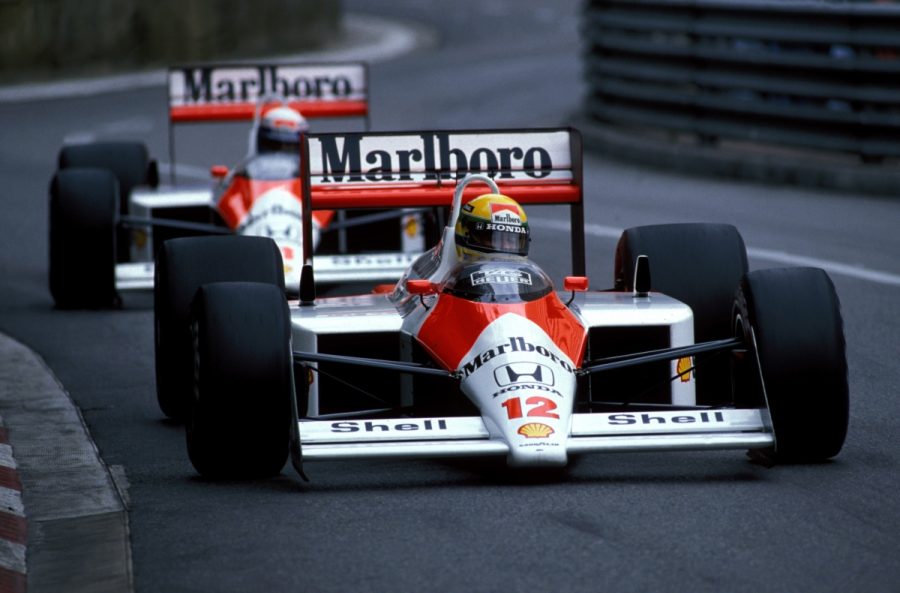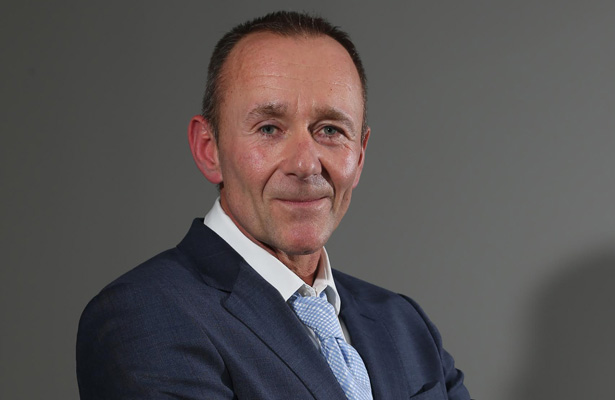IN-HOUSE EXPERTISE
Besides an innovative split-turbo design and clever intercooler setup, Mercedes’ success also stems from Brixworth’s renowned prowess in ERS efficiency.
It should not come as a surprise then to see that Cowell has been at the helm of in-house projects in that field, most notably the kinetic energy recovery system (KERS) that was introduced in F1 in 2009.
Unlike other engine manufacturers, which let their works teams develop the system and/or entrusted it to their suppliers (Magnetti Marelli for Ferrari and Renault for instance), Mercedes developed the system internally via a bespoke department, which remains headed by John Stamford to this day.
“The decision that the KERS system would be engineered here has helped us,” Cowell acknowledged, but Mercedes still had to start from a blank canvas. Second-generation KERS, raced over the 2011-13 period, were already much more efficient and better packaged than their 2009-spec predecessors. Mercedes was still powering McLaren at the time, so the British team worked in collaboration with Brackley engineers to fine-tune the device.
The experience proved to be extremely valuable when time came to implement the ERS at the dawn of the latest turbo era. Three years into these engine regulations, Renault has decided to follow a similar path after entrusting ERS development to Infiniti.
PLENTY OF DEVELOPMENT UPSTREAM
Mercedes started working on its hybrid engine at a very early stage, with former Ferrari president Luca di Montezemolo recently claiming that the German constructor began work in 2007.
As soon as the FIA released the framework of the 1.6-litre V6 turbocharged regulations in 2011, Cowell and his team designed and built a prototype engine with the plant ready six months later, just before Christmas.
The turbocharger was not split on that first model, and the overall unit too big and heavy (262kg) but the internals – cylinder head, crankcase, combustion chamber – gave Mercedes engineers the possibility to test several solutions, assess their potential, and use tangible data to work with their chassis colleagues.
“From the new regulations coming out to the first race, it was ‘let’s all look at that on a Gantt chart, and let’s work out what are the key events’,” Cowell remembered.
“Christmas appears a couple of times in there – this kind of milestones help to tie your work-life in the life you have always known –, track testing before the first race appears in there.
“[And then] we look at it to say ‘How many full V6 iterations can we do in that period of time?’ It is the harmony between simulation and experimentation that enables rapid iterations to be done. So you need to get your simulation and your experimentation correlated well and then you need to be in a situation where you can do as many of those iterations as possible before the first race, before the point you have to commit.
“You hear people say, we are going to leave the winter model in the windtunnel for a longer period of time and then release the final aero surfaces to the manufacturing machinists as late as possible because that can give us a massive advantage. It is exactly the same with the thermodynamics of an engine.”
Working from an accurate model is very important while developing a turbocharged engine, which is more prone to knocking than a normally-aspirated unit due to higher heat loads, even more so with a lean-burn engine.
Mercedes engineers in charge of internal combustion, under the stewardship of Nigel McKinley, were thus able to use data from the early prototype power unit to refine their simulation. Before testing several V6 iterations on the dyno, they also needed to optimise and shorten design-production-vetting cycles.
“The list of ideas you have is bigger than what you’ve got time for, so you prioritise. And then you pick the list, you always pick more than you can do. As a leader you always encourage people to do quicker than they think they can do.
“I remember on the cylinder head [of the CK engine], we knew that doing lots of cylinder head designs and iterations would help us with our performance, because combustion is critical. And so we looked at how long does it take us to make a cylinder head, from having an idea to running [it] on an engine, [plus] simulation time, design time, final simulation, casting, machining, building. We wanted to halve that. Everybody was ‘wow”, but why not? It used to be four weeks, which was a good time.
“We can now do that in an hundred hours, so four days. Just by looking at what is the real added-value time. It is more complex than it was before, we have not made the design simpler, because anybody can do that.
“Anybody can go quicker by cutting corners. You need to be really clever to go quicker and on something more complex. In motorsport, there is only one graph that matters, and that is: performance improvements against earth days. All you want to do is push that up.”








